Murals for millennials
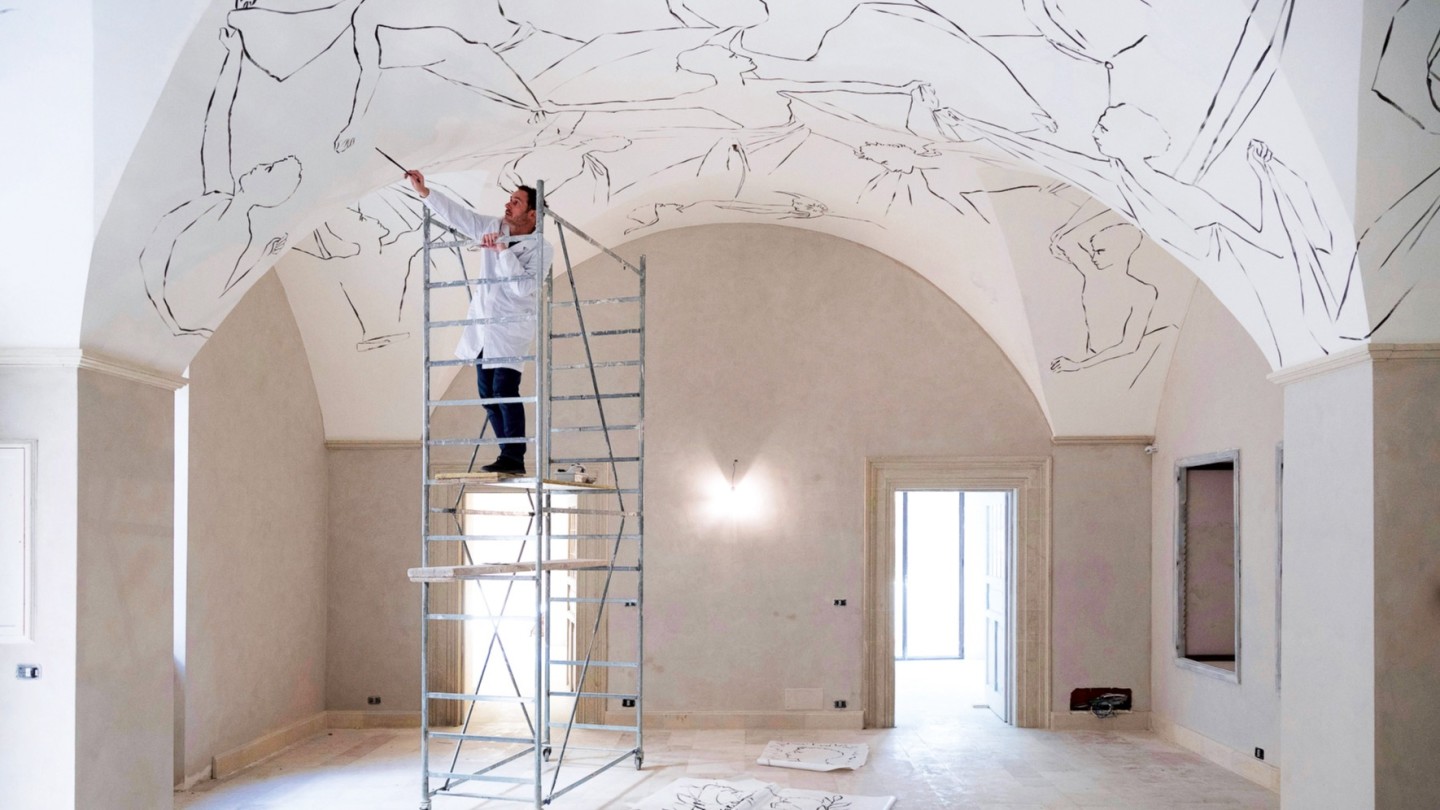
Roula Khalaf, Editor of the FT, selects her favourite stories in this weekly newsletter.
In Edwina Gieve’s east London kitchen, a group of brightly coloured harlequins dance above the sink and stovetop. One threatens to let a lobster platter slip. Another, masked and mischievous, is caught in the act of cartwheeling into a precariously placed wine glass. For Gieve, co-founder of womenswear brand Clary & Peg, commissioning a handpainted mural when she redesigned her home was an opportunity to inject a dose of whimsy. Now more than ever it is bringing her joy.
“There’s a new mood for this more inventive way of decorating a home,” says Mary Wintour of Maxted Murals, which executed the design. Inspired by Hockney’s Harlequin from Parade, a Fornasetti cupboard and a “love of Jean Cocteau’’, the scene takes centre stage in a room designed to match its playful chaos. “It makes us happy,” says Gieve. “And it brings light and movement to our kitchen.” But it’s not just fantastical designs that are taking shape; landscapes are finding expression indoors, while others are using the art form to highlight a building’s history.
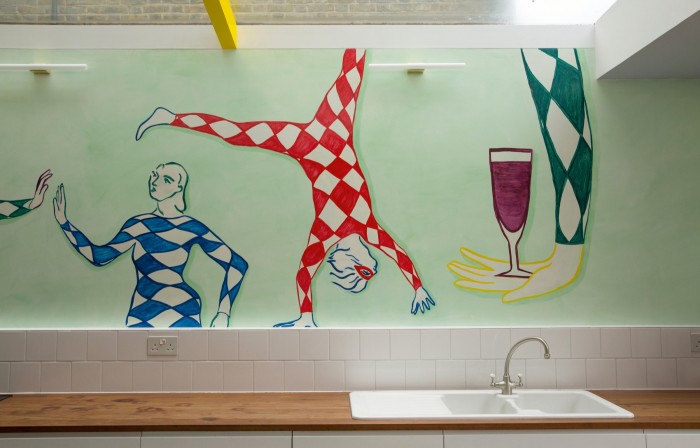
It’s a trend that’s been championed by Instagram’s elite: a Ludwig Bemelmans-inspired mural for Swedish interior designer Beata Heuman; a floral illustration for supper-club supremo Laura Jackson; and a 30ft work for journalist and podcast co-host Pandora Sykes. And the past few months spent indoors staring at the walls have been grist to the mill. French artist Nathalie Lété had long fantasised about covering her home with painted artworks, a dream she began to make reality after buying a house an hour south of Paris two years ago. But it wasn’t until lockdown that she was able to make real progress. “My goal is to cover everything,” she says, from staircase to ceiling. “You can create your own paradise with murals.” Lété’s colourful, dreamy designs, posted on Instagram, prompted a commission for Sussex hotel Hawthbush Farm.
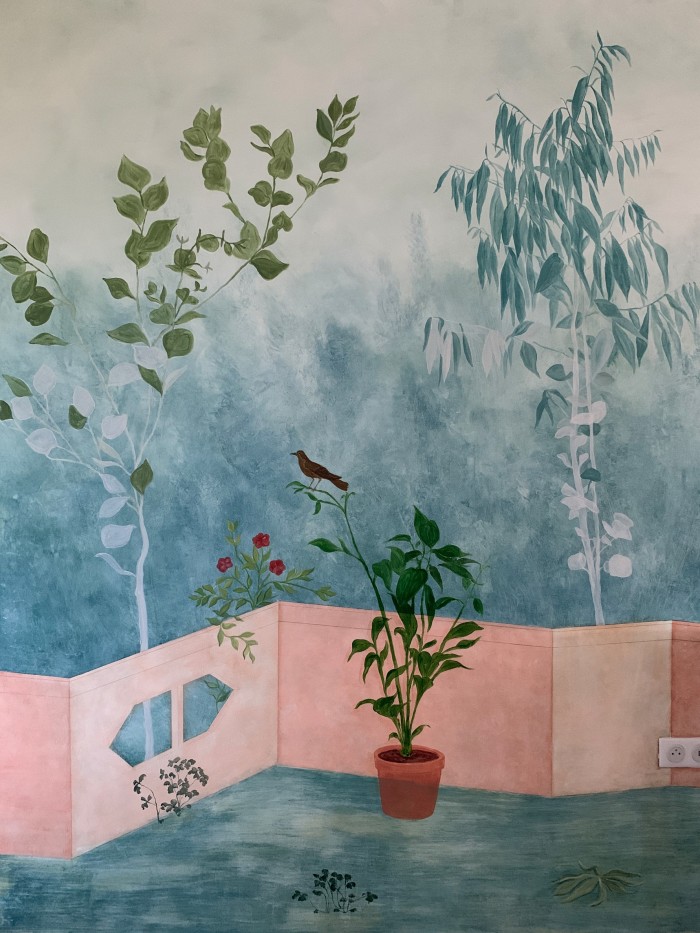
In Paris, artist Roberto Ruspoli is inspired by classical art, and takes the mural back to its ancient roots. “I love the idea of living with art,” he says of his clean-lined depictions of Roman youths. “I like the thought of it being part of the physical space that we live in, just as it was in Greece and Rome. People want to dream in their homes, not just decorate them.” Ruspoli started working with architects three years ago, but has been painting on walls since he was a child. Before he begins a project, he sizes up the surface he’s about to paint in relation to his body. This allows him to “control the space”, which can often span more than three times his height. The artist started the year with a fresco for a palazzo in Puglia, and post-lockdown projects are set to include the ceiling of a restaurant in Cannes and an entire floor of the soon-to-open Soho House in Paris.
While Ruspoli’s creations are modern interpretations of the classical art form, other muralists specialise in projects that closely resemble the opulence of historical architecture. Frederick Wimsett’s preferred medium is 18th-century chinoiserie. Handpainted in situ, the American-born designer’s delicate works have graced the bedrooms, bathrooms and kitchens of clients including Alice Temperley and Kate Moss.
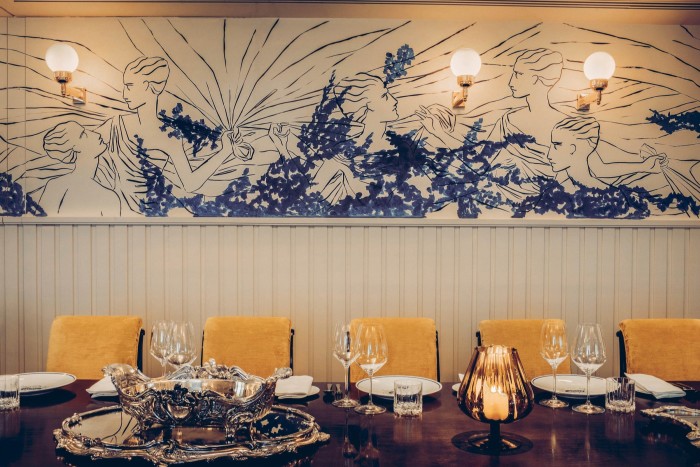
Similarly detailed in his approach is Suffolk-based artist Alan Dodd, whose trompe-l’oeil murals are so convincing that he was asked to recreate three lost wall panels in a Georgian townhouse originally designed by architect James Wyatt.
“A mural can transform a space,” says illustrator Alex Merry. “Whether it’s a giant wall on the side of a tower block or a small design in your home, murals have the power to make a place feel completely different.” In 2017, about 18 months after Merry decided to make a career out of her folk-inspired artworks, Alessandro Michele, creative director of Gucci, spotted her work on Instagram. Their ongoing collaboration – colourful designs adorned with roaring tigers, golden snub-nosed monkeys and finely wrought Zumi bags – now includes a series of wall paintings created for the Gucci Garden stairwells in Florence.
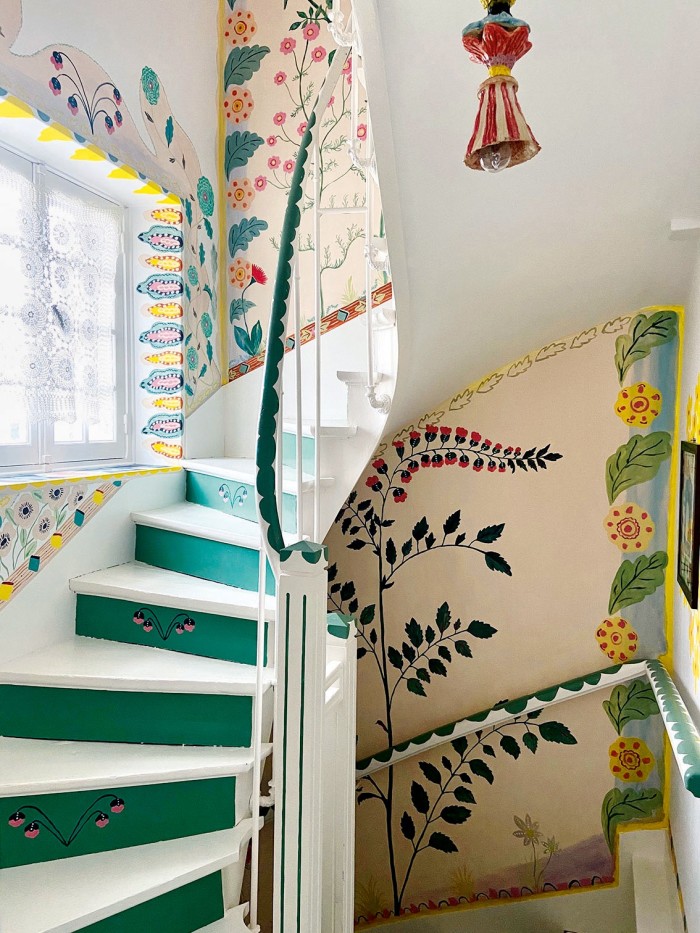
The project, titled Alchemical Archways, features eight painted windows that open onto the Piazza della Signoria, which Merry has transformed into a mythical dreamscape inhabited by interpretations of the Divine Mother and Perseus. It’s this “marriage of art and architecture”, as Ruspoli puts it, that supports the mural’s relevance in the modern world, where artworks can retain the essence of a place while also transporting their beholders somewhere completely new.
Comments